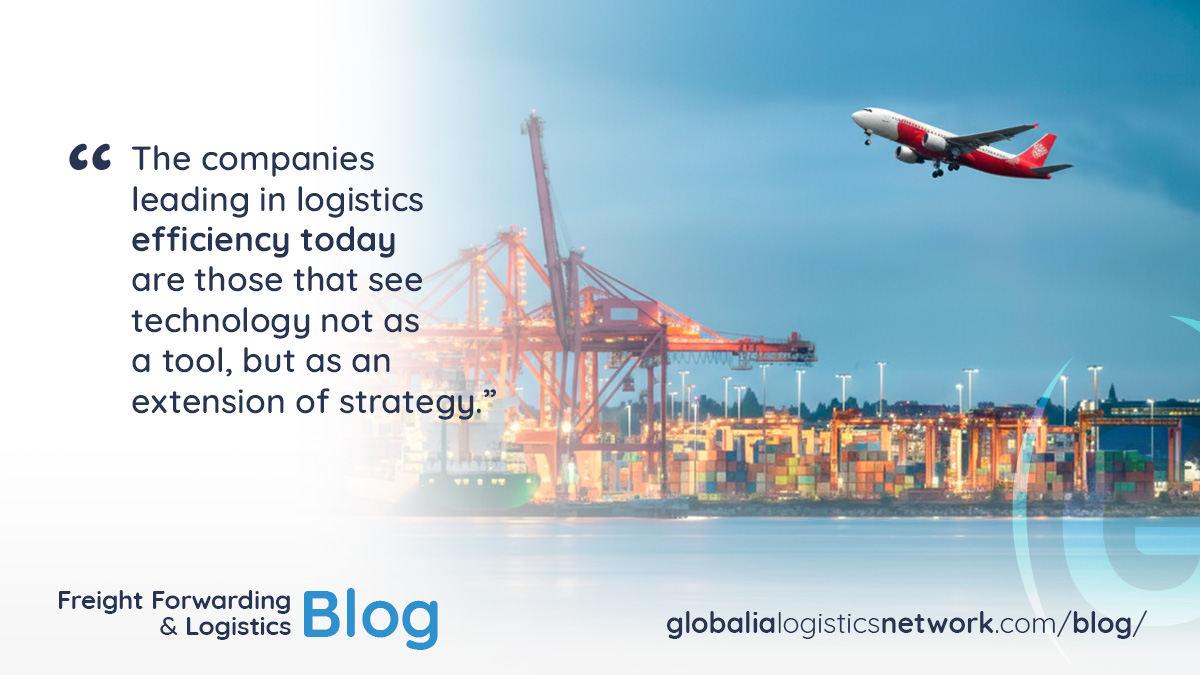For years, logistics companies have relied on static route planning like pre-determined paths, fixed schedules, and manual decision-making. But global trade no longer runs on predictability. Congested ports, volatile weather, fuel price fluctuations, and shifting regulations have turned supply chains into living, breathing ecosystems that need constant adjustment. That’s where dynamic route optimization is rewriting the rules.
In both air and ocean freight, this technology is helping logistics providers plan, adapt, and deliver with precision in real time. Instead of reacting to disruptions after they occur, forwarders are now predicting and avoiding them. The result? Lower costs, faster deliveries, and more sustainable operations. Let’s break down why dynamic route optimization has become a game-changer for modern freight forwarding and how it’s shaping the future of global logistics.
What Is Dynamic Route Optimization?
Dynamic route optimization is the process of continuously recalculating transport routes based on live data. Unlike static planning, which assumes everything will go as scheduled, dynamic optimization adjusts to changing conditions such as weather delays, airspace congestion, port backlogs, or traffic disruptions.
In ocean freight, it can mean rerouting a vessel to a less congested port. In air freight, it can involve shifting cargo to an alternative flight path when severe weather hits. The system uses advanced algorithms, AI, and real-time analytics to make the most efficient routing decisions possible. This flexibility is particularly valuable in today’s fragmented logistics landscape, where timing, visibility, and cost-efficiency are critical to staying competitive.

The Benefits of Dynamic Route Optimization
For freight forwarders, carriers, and shippers, the benefits of dynamic route optimization go far beyond saving a few hours on delivery. It transforms the way supply chains operate, creating networks that are more responsive, data-driven, and resilient.
Here’s what makes it so powerful:
1. Improved On-Time Performance:
By responding instantly to delays or bottlenecks, dynamic routing ensures shipments stay on schedule. For air freight, where time is money, this can significantly reduce missed connections and idle time.
2. Reduced Fuel and Operating Costs:
Rerouting based on real-time conditions means fewer detours and idle hours. Ocean carriers, for example, can use weather routing to avoid rough seas or optimize fuel burn, leading to substantial cost savings.
3. Enhanced Visibility and Transparency:
With real-time route optimization for freight, logistics managers gain continuous visibility over shipments. They can track where every container or pallet is, assess estimated arrival times, and communicate updates instantly to clients.
4. Sustainability Gains:
More efficient routes mean less fuel consumed and lower emissions—a growing priority for companies aligning with global decarbonization goals.
5. Stronger Customer Satisfaction:
When clients receive their cargo on time and with fewer surprises, they stay loyal. Dynamic routing helps forwarders build a reputation for reliability and precision.
Dynamic Route Optimization in Air Freight
Air freight operates in one of the most time-sensitive environments in global logistics. Delays caused by weather, airspace restrictions, or last-minute cargo changes can create a domino effect across entire delivery chains.
Here’s where dynamic route optimization changes the equation. Airlines and forwarders use predictive analytics to anticipate disruptions before they happen. For example, if a thunderstorm is expected to ground flights in Frankfurt, shipments can be rebooked automatically on the next available route through Amsterdam or Paris.
This flexibility is powered by real-time data integration. Systems combine flight schedules, weather updates, and cargo handling capacity to recommend optimal routing within seconds. The result is smoother coordination between freight forwarders, ground handlers, and airline partners thus minimizing idle time and maintaining cargo integrity.
Another growing area is sustainability. Dynamic routing helps airlines plan fuel-efficient paths, balancing flight duration and energy consumption. Over time, this contributes not only to lower operational costs but also to reduced carbon footprints—an essential factor as aviation faces stricter environmental regulations.
Dynamic Route Optimization in Ocean Freight
In ocean freight shipping, the impact is even more profound. Container vessels face unpredictable port congestion, adverse weather, and geopolitical tensions that can change routes overnight. Static planning simply can’t keep up.
With real-time route optimization for freight, ocean carriers can dynamically adjust course, avoiding congestion at ports or rerouting to nearby terminals with available berths. For freight forwarders managing multimodal shipments, these systems help them stay informed and adjust downstream transport plans accordingly.
For example, if a ship is delayed at the Port of Singapore, dynamic optimization tools can alert inland transport providers and automatically rebook trucking slots at the arrival port. This level of synchronization helps avoid the cascading delays that often disrupt entire supply chains.
Additionally, implementing dynamic route optimization software allows ocean carriers to analyze vast datasets from vessel performance metrics to ocean current patterns and use AI to predict the most efficient sailing paths. This not only improves turnaround times but also reduces fuel consumption by up to 10–15%, depending on conditions.
How Dynamic Routing Improves Logistics Efficiency
The connection between route optimization and logistics efficiency is clear, but it’s worth digging into how exactly dynamic routing improves logistics efficiency at every level.
1. Proactive Decision-Making:
Dynamic systems turn reactive problem-solving into proactive strategy. Instead of waiting for a shipment to be delayed, forwarders can reroute it before the issue impacts delivery.
2. Optimized Resource Utilization:
Dynamic routing balances load distribution across networks—airlines, ships, trucks, and warehouses ensuring that no resource is over or underused.
3. Seamless Coordination Across Modes:
When air and ocean routes change, connected systems automatically adjust downstream logistics—ground transport, customs clearance, and delivery schedules keeping the entire chain synchronized.
4. Greater Agility in Global Trade:
In volatile markets, flexibility is a competitive edge. Companies that can reroute shipments faster maintain reliability and reduce financial losses.
In short, how dynamic routing improves logistics efficiency lies in its ability to make every decision data-driven, interconnected, and immediate.
Implementing Dynamic Route Optimization Software
Adopting dynamic route optimization software isn’t a plug-and-play decision. It requires strategic integration into existing logistics systems. Here’s how forwarders and carriers can make it work:
1. Start with Data Quality:
Accurate data is the foundation. Ensure you have access to clean, structured data from sensors, IoT devices, and partners across the supply chain.
2. Integrate Across Systems:
Dynamic optimization software should connect seamlessly with TMS (Transport Management Systems), WMS (Warehouse Management Systems), and ERP platforms to create a unified flow of information.
3. Train Teams and Redefine Roles:
Operational teams need to trust the technology. Training on data interpretation and scenario planning is key to successful adoption.
4. Collaborate with Technology Partners:
Select tech providers who understand logistics complexities, particularly those with AI and predictive analytics capabilities tuned for freight forwarding.
5. Measure and Adapt:
Set performance metrics like on-time delivery rates, cost savings, and CO₂ reductions. Regularly review and refine the system based on real-world results.
The companies leading in logistics efficiency today are those that see technology not as a tool, but as an extension of strategy.
The Future of Dynamic Route Optimization in Global Freight
As global logistics becomes more digitized, dynamic route optimization will evolve beyond simple rerouting. Predictive AI will forecast disruptions before they occur, blockchain will secure real-time data sharing, and automation will execute routing adjustments autonomously. Freight forwarders that embrace this shift will be better equipped to handle supply chain shocks, meet client expectations, and operate sustainably. Air and ocean freight networks are entering a new phase—one where decisions are made not by guesswork but by intelligence.


